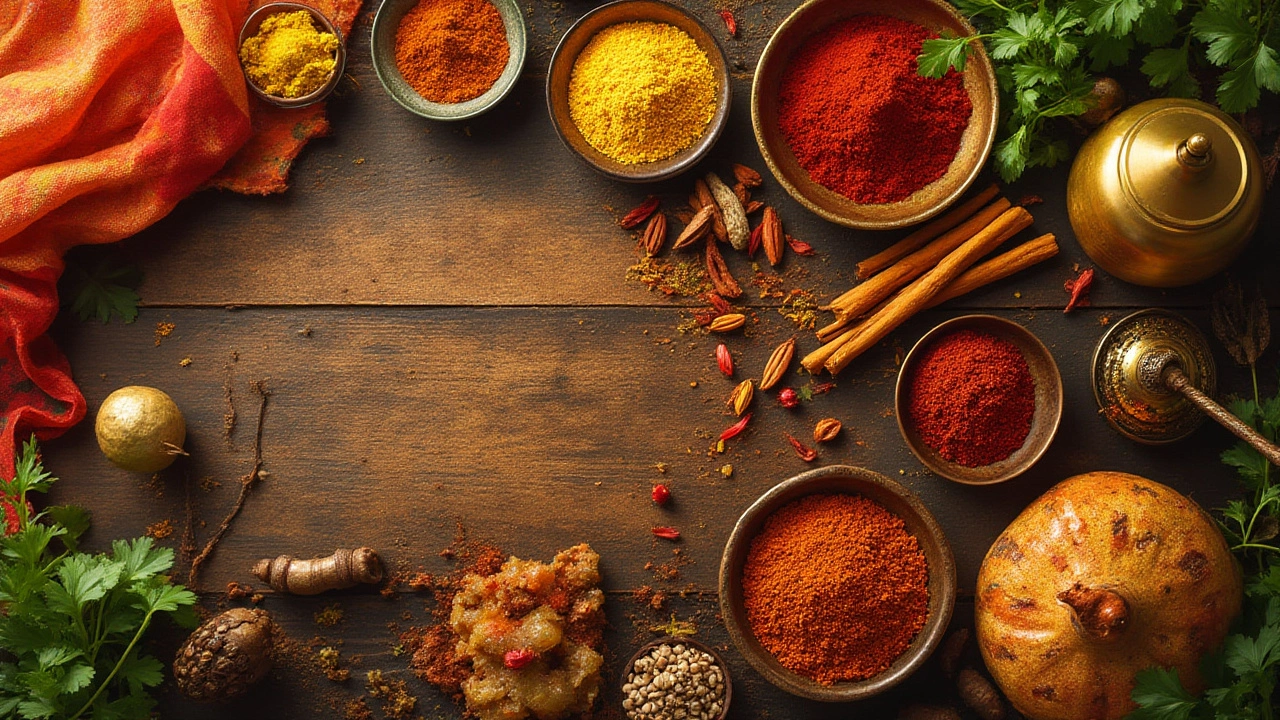Curry Spices: The Heart of Indian Flavour
When cooking with Curry Spices, a mixture of dried herbs and ground seeds that gives Indian dishes their signature aroma and depth. Also known as curry masala, these blends are the backbone of everything from a simple dal to a lavish biryani. Nearby, Masala, the generic term for any spice mix in Indian cooking often includes Turmeric, a bright yellow root powder prized for its earthy flavor and health benefits and Cumin, a warm, nutty seed that adds depth to most curry bases. Together they form the core of Indian cuisine’s flavor system.
Why Spice Blends Matter
Understanding curry spices is key because a good blend creates balance. A curry blend encompasses sweet, bitter, sour, and spicy notes, while the cooking method requires proper timing to release each aroma. Different regions influence which seeds and powders dominate the mix, so your pantry can reflect the diversity of Indian kitchens.
Take the classic Garam Masala of North India: it leans on cardamom, cloves, and cinnamon for a sweet‑spicy punch. Meanwhile, South Indian sambar powder swaps those sweet notes for mustard seeds and dried red chilies, delivering a sharper heat. Both are still curry spices at heart, but the regional touch changes the final flavor profile dramatically.
Heat level is another critical factor. Fresh or dried chilies bring the heat, while black pepper adds a subtle sharpness. Knowing when to add these fiery components—usually after the base aromatics have sautéed—prevents bitterness and keeps the sauce smooth. This simple step often separates a bland stew from a vibrant curry.
Toasting the whole spices before grinding is a game‑changer. The heat unlocks hidden oils, turning a flat powder into a fragrant masterpiece. A quick dry‑roast in a pan for 30 seconds, followed by a grind in a spice grinder, yields a richer, deeper taste that you can’t get from store‑bought mixes alone.
Storage matters, too. Keep your spice blends in airtight containers, away from sunlight and moisture. A dark pantry or a sealed jar prolongs potency for up to a year. If you notice the aroma fading, it’s time to refresh the mix—fresh spices make a noticeable difference in every bite.
Armed with the right blend, you can tackle any curry style. Want a silky butter chicken? Start with a base of toasted cumin, coriander, and turmeric, then finish with a splash of cream. Craving a tangy tomato curry? Add a pinch of chili powder and a dash of fenugreek for depth. Each recipe in our collection below shows how these foundational spices can be tweaked to match your taste.
Now that you know the building blocks, explore the articles that dive deeper into specific dishes, techniques, and flavor hacks. From mastering creamy sauces to deciding whether tomatoes belong in your curry, the posts ahead will give you clear, actionable steps to elevate every pot you stir.

Curry Ingredients: The Essential Flavors Every Dish Needs
Get to know the must-have curry ingredients. Dive into spices, herbs, and staple flavors that make curry dishes so irresistible and comforting all around the world.

Can You Cook Curry Without Turmeric? Flavor Secrets & Creative Alternatives
Wondering if you can make curry without turmeric? Discover proven techniques, flavor swaps, and expert tips so you never miss out on great curry taste—even without turmeric.